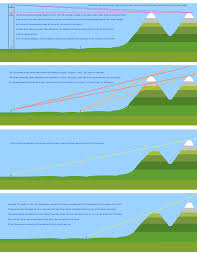Craft the Perfect Business Proposal
Table of Contents
Creating a compelling business proposal is essential for winning new clients and securing deals. A well-crafted proposal clearly outlines your understanding of the client’s needs, details your proposed solution, and demonstrates why you are the best choice for the project. This guide will help you craft the perfect business proposal that stands out and delivers results.
Understanding the Basics
What is a Business Proposal?
A business proposal is a formal document that presents your company’s services or products to a potential client. It aims to persuade the client to choose your business over competitors by showcasing your expertise, understanding of their needs, and the value you offer.
Types of Business Proposals
- Solicited Proposals: Requested by the client through a request for proposal (RFP) or a similar process.
- Unsolicited Proposals: Offered by your business to potential clients without a prior request.
Structuring Your Proposal
1. Title Page
The title page sets the stage for your proposal. Include the following:
- Proposal title
- Your company name and logo
- Client’s name and logo
- Submission date
2. Table of Contents
A well-organized table of contents helps the client navigate your proposal easily. Ensure it’s clear and concise, listing all the sections and subsections.
3. Executive Summary
The executive summary provides a snapshot of your proposal. It should briefly cover:
- The client’s needs or problems
- Your proposed solution
- The benefits of choosing your business
- Key points and highlights
4. Introduction
Introduce your business and the purpose of the proposal. Explain how your services align with the client’s needs. Establish a connection by demonstrating your understanding of their industry and challenges.
5. Problem Statement
Clearly define the problem or need that the client has. Use data and insights to show that you have thoroughly researched and understand their situation.
6. Proposed Solution
Detail your proposed solution, explaining how it addresses the client’s problem. Break down your solution into manageable steps or phases. Highlight the unique aspects that set your solution apart from competitors.
7. Benefits
Outline the benefits the client will gain from your solution. Focus on tangible results, such as cost savings, increased efficiency, or enhanced performance. Use specific examples and data to support your claims.
8. Methodology and Approach
Describe the methodology and approach you will use to implement your solution. Include timelines, milestones, and deliverables. This section should provide a clear roadmap of how you plan to achieve the desired outcomes.
9. Pricing
Provide a detailed pricing structure. Include a breakdown of costs, payment terms, and any optional services. Ensure transparency and justify your pricing by emphasizing the value and ROI the client will receive.
10. Qualifications
Highlight your company’s qualifications and expertise. Include:
- Company history and background
- Relevant experience and case studies
- Key team members and their qualifications
- Testimonials and references
11. Terms and Conditions
Outline the terms and conditions of the proposal, including legal aspects, confidentiality agreements, and any specific terms related to the project.
12. Call to Action
End with a strong call to action, encouraging the client to take the next step. Provide clear contact information and express your eagerness to discuss the proposal further.
Writing Tips for an Effective Proposal
Be Clear and Concise
Use clear, concise language to convey your message. Avoid jargon and overly complex sentences. Your goal is to communicate your ideas effectively.
Focus on the Client
Tailor your proposal to the client’s specific needs and goals. Show that you understand their challenges and are committed to providing a customized solution.
Use Visuals
Incorporate visuals such as charts, graphs, and images to enhance your proposal. Visuals can help explain complex information and make your proposal more engaging.
Proofread and Edit
Thoroughly proofread and edit your proposal to ensure it is free of errors. A polished, professional proposal reflects well on your business.
Conclusion
Crafting the perfect business proposal requires careful planning, a deep understanding of the client’s needs, and clear communication of your value proposition. By following the structure and tips outlined in this guide, you can create a compelling proposal that stands out and wins new business.








